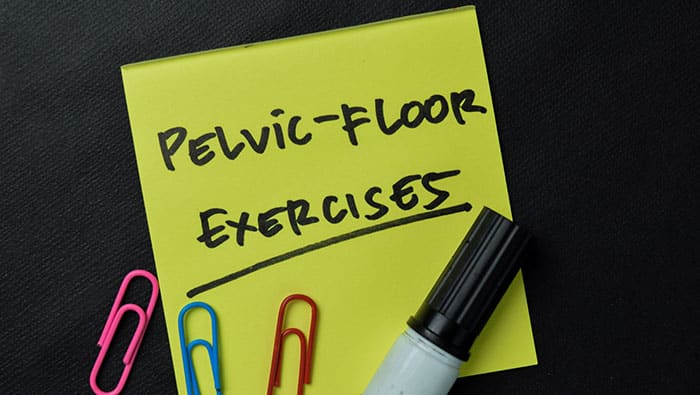Is a Pelvic Floor Exerciser Right for You?

Your pelvic floor muscles are the unsung heroes of your core. They quietly support your bladder, uterus, and rectum and are key players in controlling your bladder and bowels.
But when these vital muscles weaken, they can lead to unwelcome issues like urine leakage, and for women, painful intercourse or even pelvic prolapse. Many factors can contribute to this weakening, from pregnancy and childbirth to hysterectomy, the natural process of aging, and even frequent straining on the toilet.
Fortunately, there are effective ways to strengthen these muscles, and you might wonder if a pelvic floor exerciser is right for you.
How Kegels help
Kegels are a “squeeze and release” exercise frequently recommended for both women and men to strengthen pelvic floor muscles. Strong pelvic floor muscles can help to prevent:
- urinary leakage in women when doing anything that puts pressure on the belly, like coughing, sneezing, or laughing
- urinary leakage in men that may occur after surgery for prostate cancer
For instructions on performing Kegel exercises properly, read our blog, Exercises to Strengthen Your Pelvic Floor.
Now, besides Kegels, there are devices called pelvic floor exercisers or trainers that can further strengthen pelvic floor muscles.
What’s a Pelvic Floor Exerciser?
These devices are fairly new to the pelvic floor strengthening scene. They are meant to re-educate your pelvic muscles to do their job of supporting your bladder, uterus, and rectum. They can also ensure you’re doing Kegels correctly and efficiently, which many women and men struggle with.
There are many types of pelvic floor exercisers, each in various sizes and shapes. They include:
Weighted balls for women
When you insert one of these weighted balls into your vagina, your muscles will automatically contract to hold the ball in. If the ball falls out, your job is to squeeze the muscles to hold it in. By doing so, you’ll strengthen the muscles.
Once you can easily hold in the lightest ball, you progress to a heavier ball to further strengthen the muscles. It’s important to follow the device instructions regarding how long to use a ball at any one time (longer is not better!). Look for balls made of silicone or another non-porous material so they won’t absorb infection, and for balls that have a string attached, so you can easily remove each one like you would a tampon.
Biofeedback devices for women and men
These are placed on the skin near your vagina (or rectum in men) and are digitally connected to your smartphone via an app. The app measures the activity of your muscles and provides feedback to let you know if you’re doing Kegels correctly. The device tracks your progress over time and sends alerts when it’s time to do your Kegels again.
Electrical stimulators for women and men
These devices use a low-voltage electrical current to stimulate and strengthen your pelvic floor muscles. Some stimulators are like a small cushion on which you sit, fully clothed, while an electrical current delivers a signal to the muscles near the vagina, or, in men, the rectum. Other types, for women, are inserted into the vagina. As the electric current passes through your clothing and muscles, it causes the muscles to contract. Over time, the muscles become stronger.
The EMSELLA® Chair is an FDA-approved treatment for urinary incontinence that uses high-intensity focused electromagnetic (HIFEM) technology to stimulate pelvic floor muscles. As the patient, you sit in the chair, fully clothed, while the device performs 11,200 Kegel contractions in 30 minutes.
Do doctors recommend them?
Many (but not all) doctors believe that pelvic floor trainers are a great tool for enhancing Kegels. And if you’re someone who intends to do Kegels regularly, but often forgets, the device can be a great reminder.
If you’re considering purchasing a pelvic floor exerciser, here are three tips:
- Pelvic floor exercisers aren’t right for everyone. Although buying one doesn’t require a prescription, checking with your doctor before using one is important. Prices range from about $50 to more than $500.
- If you have pain in your pelvic region, it is especially important to be examined by your physician before using any pelvic floor training device. Pain can be a sign of a different problem, which can be made worse with a training device.
- Be patient. If used consistently (several times a week), you should see results in 3-6 months, depending on your individual situation.
Don’t be shy about talking to your doctor about strengthening your pelvic floor. Michigan Institute of Urology providers have this conversation with patients daily.
If you are suffering from urinary incontinence or painful sex, schedule an appointment to speak with a urologist at one of our many convenient locations. If you are interested in learning more about the EMSELLA Chair, get in touch with the specialists at MIU’s REDEEM sexual wellness center.

